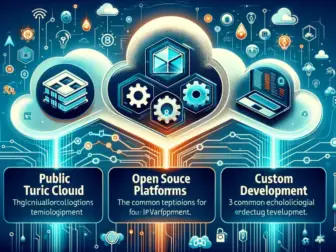Tag - smart manufacturing IoT
Revolutionizing Production: The Rise of Smart Manufacturing through IoT Integration
Revolutionizing Production: The Rise of Smart Manufacturing through IoT Integration
In the contemporary industrial landscape, the advent of the Internet of Things (IoT) has heralded a new era of innovation, efficiency, and productivity. Smart manufacturing, characterized by the seamless integration of IoT devices and technologies, is transforming how products are designed, fabricated, and distributed across a multitude of sectors.
The core premise of smart manufacturing lies in the interconnectivity of machinery, tools, and workers, all communicating through a digital thread. This ecosystem comprises sensors, actuators, and industrial controllers, all linked via networks to software platforms capable of real-time data analysis and decision-making. By harnessing the power of IoT, manufacturers can unlock valuable insights, automate processes, and greatly enhance their operational agility.
One of the primary advantages of smart manufacturing is the unprecedented visibility it offers into production processes. Sensors embedded in equipment can monitor performance, predict maintenance needs, and detect anomalies before they lead to downtime or defects. For example, a sensor detecting an abnormal vibration pattern in a motor can trigger a maintenance request, allowing for repairs to be conducted proactively, thus avoiding costly interruptions.
Additionally, IoT drives substantial improvements in supply chain management. Trackers and smart tags enable companies to trace materials and products from their origin to the final customer. This granular tracking capability ensures better inventory management, reduces waste, and enhances the responsiveness to market demands or supply chain disruptions.
Another crucial aspect is the facilitation of what is known as the ‘digital twin’ – a virtual representation of a physical object or system. By mirroring real-world assets in a digital environment, manufacturers can simulate and optimize processes, test changes, and predict outcomes without interrupting the actual production line.
IoT also fosters an environment ripe for employing advanced technologies such as machine learning and artificial intelligence (AI). With access to vast amounts of operational data, AI algorithms can identify patterns, optimize energy consumption, improve quality control, and even predict market trends, thereby giving manufacturers a competitive edge.
Human-machine collaboration is yet another frontier expanded by smart manufacturing. Robotic systems can take over repetitive, hazardous, or precision tasks, while IoT devices provide workers with data and insights, enhancing their decision-making capabilities. This symbiotic relationship between humans and machines not only boosts productivity but also elevates the role of the human workforce to more strategic, creative, and supervisory functions.
Despite its myriad benefits, the transition to smart manufacturing is not without challenges. Concerns such as cybersecurity, data privacy, and the need for skilled personnel to manage and interpret IoT systems are significant hurdles that companies must navigate. Moreover, the initial investment in IoT infrastructure can be substantial, requiring a clear vision and strategy to ensure a return on investment.
In conclusion, smart manufacturing powered by IoT is not a futuristic concept but a present-day reality transforming the industrial sector. It equips manufacturers with the tools to innovate, optimize, and compete in an ever-evolving marketplace. As we continue to witness the proliferation of IoT in manufacturing, it is clear that those who embrace this revolution will shape the future of production, while those who lag may find themselves left behind in an age of relentless progress and technological advancement.
